Inbound Marketing
for Lead Generation and Revenue Growth
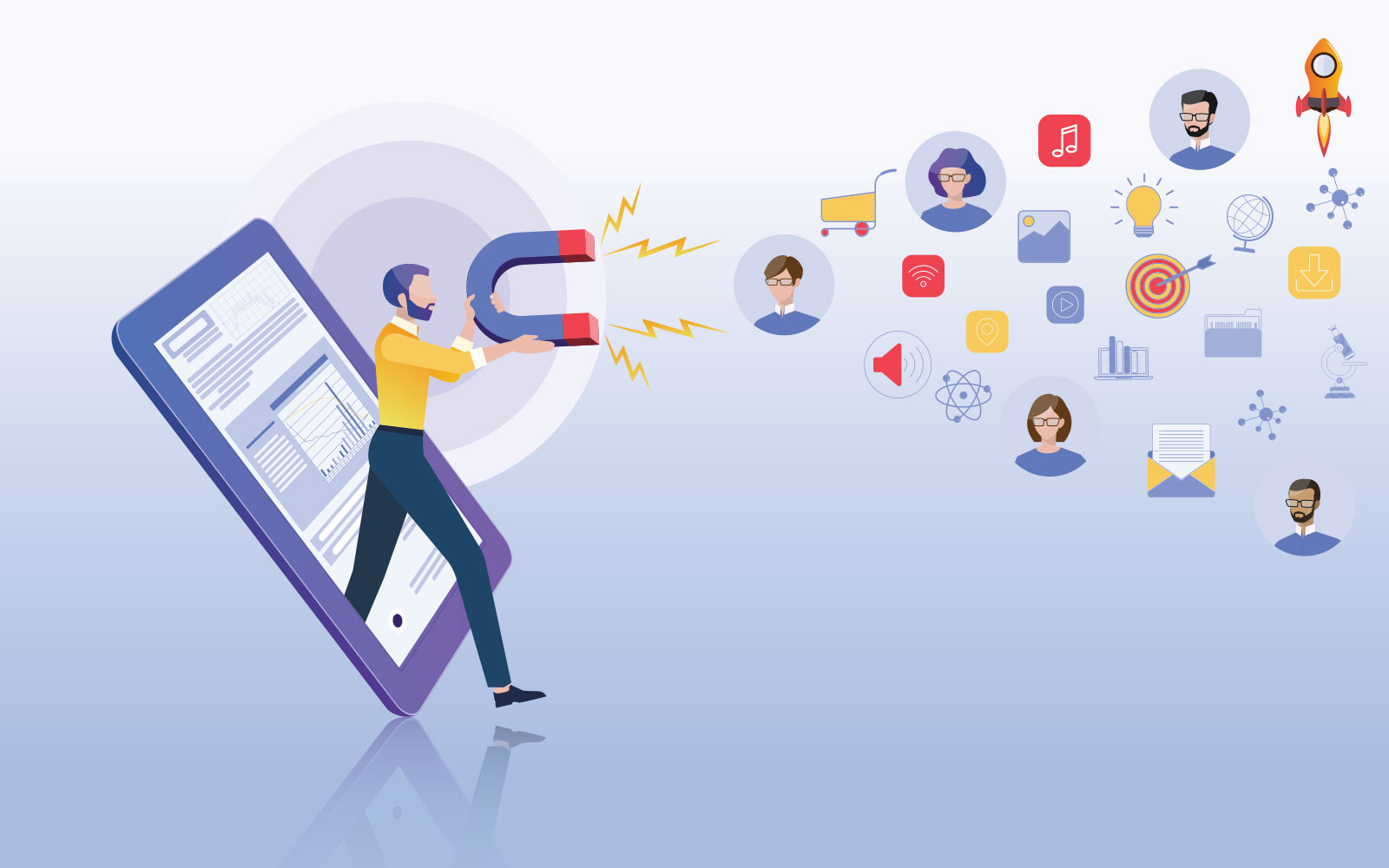
Download Your FREE Inbound Marketing Guide
![]()
More and more companies are looking for ways to grow their leads and increase revenue without using face-to-face interactions at trade shows, networking events, and other live events.
You could try many different marketing tactics with varying costs and results to see what will work. But there is a process of lead generation that’s proven to work in all types of economic situations and without face-to-face interactions.
Inbound marketing could be the answer to generating leads at the pace you need.
Let’s look deeper to see what inbound marketing is and whether it’s right for you.
Chapters

What is Inbound Marketing?
Inbound is more than a marketing tactic in a toolbelt of marketing activities. It’s a business philosophy. Inbound organizations use valuable content and experiences, tailored to their target audiences, to develop trust, and encourage interaction.
Inbound marketing positions you as a problem solver and works well for attracting people you’ve never met and for interacting with your existing customers.
Be helpful.
Build trust.
Become a problem solver.
Increase sales.
This sounds good, but how does it actually happen? Let’s take a look at the marketing and sales processes to see how inbound fits in.
How Can Inbound Marketing Increase Sales?
The general process followed for decades is that marketing creates leads, hands them off to sales, sales are closed, and salespeople move onto the next prospect.
This has traditionally been called a sales funnel with lots of potential customers at the top. From there, the sales team turns some of the leads into customers as they move down the funnel.
The thing about funnels is they have a hole at the bottom. Once a lead becomes a customer, they fall out the bottom of the funnel. And, often never heard from again by the sales or marketing teams.
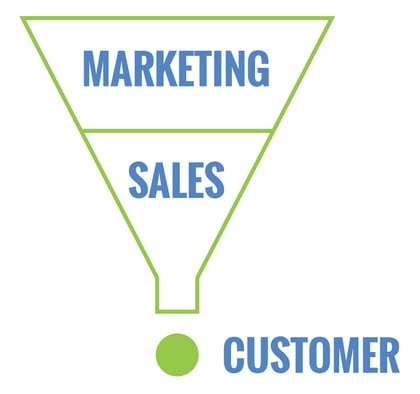
Online Reviews Changed the Sales & Marketing Funnel
ENTER the world of online reviews. There’s always been word-of-mouth marketing, but the last decade has increased the quantity of online reviews and our trust in them. Nearly everyone uses online reviews for business and personal purchases. Inc. Magazine reports that 84% of people trust an online review as much as a friend’s recommendation!
Your customers are key to future sales.
Don’t lose contact with them!

The Flywheel Replaces the Funnel
So, rather than a funnel, we have found that flywheel is a more accurate representation of what every company needs to do to grow.
Reduce the friction between sales, marketing, and the customer service team for a seamless customer experience. That results in growth!
How is Inbound Marketing Related to the Flywheel?
Inbound organizations are committed to helping their current and potential customers throughout a decision-making process and throughout a customer’s experience after making a purchase.
Inbound marketing plays a role in growing sales amongst current and potential customers. It includes attracting, engaging, and delighting customers – depending on where they are in their decision making process. There are actions to be taken at all stages of a customer’s journey.
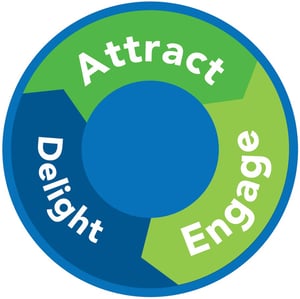
Inbound Methodology with Customer Lifecycle
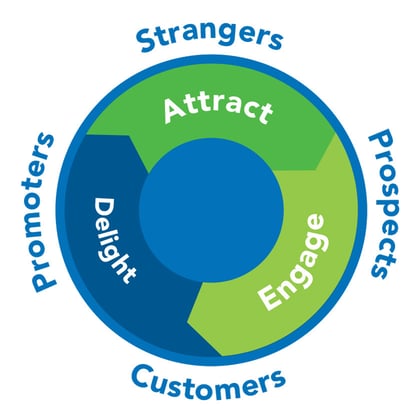
At the heart of inbound marketing is education. You’re going to present helpful information to people that you’re targeting and guide them to other information that allows them to progress through the buyer’s journey. This is called trust-based marketing.
Building these important relationships can be done using quite a few marketing tactics that help, not interrupt, those who might be considering a purchase.
Being helpful and open with potential customers (and existing customers) builds trust. And people want to buy products and services – whether it’s a personal or business purchase – from people they trust.
Inbound Marketing is ...
Meeting someone wherever they are in the buyer’s journey – beginning, middle, or end – to help them progress to the next step.
Ongoing. Even after a purchase is made, the inbound marketing process continues through education and helpfulness towards your customers.
Trust building. Whether they buy from you or not, your commitment to being helpful and honest will stick with those who encounter your process.
Tied into sales. The inbound marketing process helps nurture leads further until they’re qualified candidates for the sales team.
Trackable. You can show proof of your activities and how they produced results.
Ideal for longer-cycle sales processes targeting businesses or consumers.
NOT interrupting someone with information that they weren’t looking for.
NOT just:
- SEO,
- Blogging, or
- Email marketing
NOT a one-person activity. For inbound marketing to have a positive impact on growth, it needs to be a part of the day to day activities for marketing, sales, and customer service teams.
NOT a buzzword created by a company like HubSpot, although they revolutionized it into what it means today.
Companies around the world are using inbound marketing to build trust in their organizations and grow their sales.
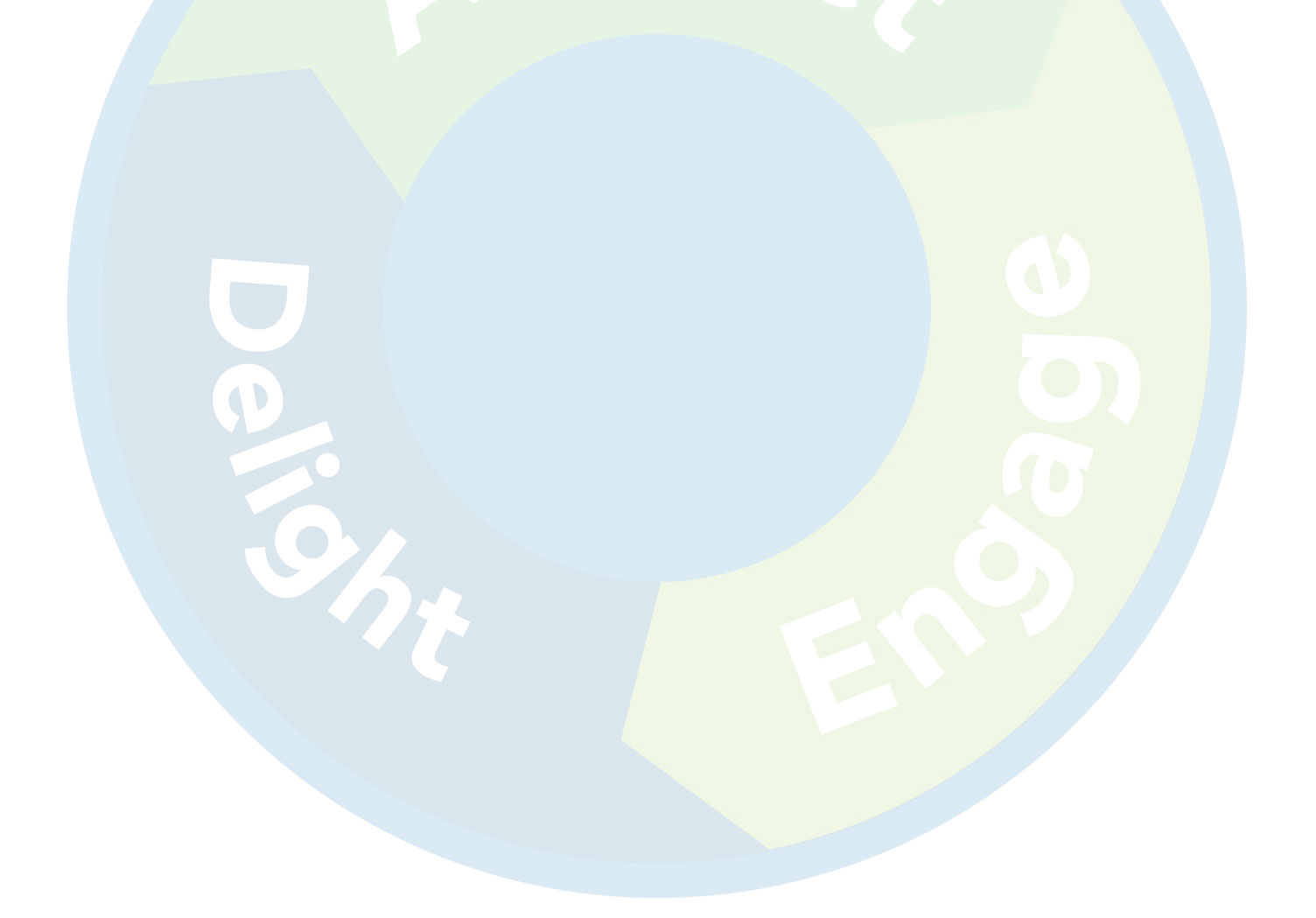
Inbound Marketing Activities by Phase

Attract Tools
Ads
Video
Blogging
Social Media
Content Strategy
Engage Tools
Lead Flows
Email Marketing
Lead Management
Conversational Bots
Marketing Automation
Delight Tools
Smart Content
Email Marketing
Live Chat
Social Media
Marketing Automation
Attract
Inbound Marketing Tools for Attracting New Leads
Ads
Videos
Blogging
Social Media
Content Strategy
A combination of marketing tactics designed to attract people to your business, whether new or returning customers, are used so that you can be found wherever your potential customers are looking for answers.
Sometimes that means placing a digital ad where they’ll be looking that directs them to content that you’ve prepared to help people with common questions and concerns that arise during the buyer’s journey.
Be helpful. Be honest. Be available to answer questions. These are things that will go a long way in building trust and that sought-after 5-star reputation.
Engage
Inbound Marketing Tools for Engaging Leads
Lead Flows
Email Marketing
Lead Management
Conversation Bots
Marketing Automation
If they’re new to you, they may need to have some specific questions answered, or to learn how you compare to other companies. Once someone becomes a lead, you want to, again, be helpful and try to give them the information they are seeking.
You’re not pushing features and benefits here. You’re helping them make a decision that’s right for them. Sometimes the best thing for someone is not your company. But for those who you’re a fit for, your help and trust-building go a long way towards turning leads into qualified leads that the sales team can convert into a customer with less effort. People buy from people they trust. Simple as that.
Delight
Inbound Marketing Tools for Delighting Customers
Smart Content
Email Marketing
Live Chat
Social Media
Marketing Automation
One of the great parts of the Delight phase is that you have information about this person so that you can tailor your communications to them individually.
- If they return to the website, you’ll know it!
- If they open and click in a follow-up email, you’ll know that too.
- If they start a chat on the website and talk to a customer service rep, you can see their conversation.
There are so many options for delighting customers!
Unfortunately, this sometimes falls off the radar for sales and marketing, and they “leave it up to customer service” to handle everything after the sale. With inbound marketing and the flywheel approach, delight is a group effort that’s not the entire responsibility of a single department.

How to Determine Which Inbound Marketing Activities to Use
Before You Start Inbound Marketing
Recognize that this is a process, and results aren’t instantaneous. While ads can help bring you results quicker, they are a tool used to direct your target market to the content you have to offer.
With inbound marketing, you’re aiming to drive more traffic from:
- Organic search results.
- Highly targeted digital ads
- YouTube videos.
- Referral links from other websites.
Step 1 of Inbound Marketing:
Assess Where You're At Right Now
Without being defensive or pointing fingered, figure out where you’re at right now so that you take the best steps for the company.
Do you get enough traffic to your website that you have an opportunity to convert enough visitors to leads to keep the sales pipeline full? If not, you may have a traffic problem. You should focus heavily on the attract phase.
Are you getting a lot of visitors, but not converting them into leads? If not, this is a conversion problem, and you should focus on the Attract and Engage phases.
Do you have a lot of customers who could buy from you again, but aren’t? This could be a problem with delight.
While all the phases are important, there is probably one that stands out above the rest as the first and easiest place to get results. Start there using the tactics to achieve the goals you’ll set for yourself. Then add on the other areas with goals for each progressively.
Step 2 of Inbound Marketing:
Set Goals and Take Action
Not sure which things you should do first? Do you wonder if your website is up to the challenge? If you have questions, we offer a 30-minute free consultation that can point you in the right direction for getting started.
If you know what you need to do, then it’s time for the right technologies to be put in place to make it all happen.
Step 3 of Inbound Marketing:
Run Your Inbound Marketing Program
Having a plan for how to actually make your inbound marketing program operate is really important to have before starting. We meet a lot of people who don’t realize all that it takes until it’s too late.
A successful inbound program is not a one-person job.
There are a lot of tasks that require attention daily, including:
- Campaign development
- Writing content
- Website design and updates for a variety of activities
- Digital ads
- Social media
- Reporting
- Assessments, to determine if changes are needed
In most cases, there is more than one ongoing campaign at a time, each needing the things listed above. It’s best to commit to inbound marketing if you have an in-house team to help or you have the budget for an agency to assist. If not, your bosses are likely to wonder why they’ve invested so much time and money into inbound marketing only to be disappointed with the pace of the results.
And on top of this, you need to be familiar with the software required to get everything done. No matter what technology you choose, there can be a learning curve. And if not, there’s still time needed to ensure everything is getting set up correctly.
Worth all the hassle? Absolutely. But you should plan to have a few people available to get the work done.

Which Inbound Marketing Technology is Right For You?
You’re going to need technology to make all of the inbound activities happen and to track the results.
We prefer HubSpot. It’s an all-in-one inbound tool that will support the inbound philosophy for marketing, sales, and customer service. That’s why we choose to partner with them.
Other inbound marketing software out there includes; Marketo, Sharpspring, Pardot.
While we can go on for a while about why we prefer HubSpot, you should know a couple of things:
- Piecing together systems for various aspects of inbound marketing is risky. You can’t report effectively on how the combined set of marketing activities (a campaign) is performing.
- You need a CRM system in place for the inbound process to work. HubSpot’s CRM is free and powerful. If you have something else, like Salesforce, you can still use HubSpot.
- HubSpot is for marketing and salespeople. Some inbound marketing tools require a developer to be available to assist you in achieving your goals. And since that’s not always possible, HubSpot fits the bill for smart marketing and salespeople who know what they need to do but aren’t experts in coding.

Proving the Results of Inbound Marketing
This is where the rubber meets the road. You need to know what worked and where you can improve so that you can build relationships with website visitors -- whether they’re new to you or an existing customer.
Be sure that you have a plan for proving the return on investment (ROI) for your inbound marketing work.
Read more about how to calculate the ROI of marketing in our blog:
How to Prove the ROI of Marketing.
The most important thing to note is that you MUST define your goals before you begin.
Common Key Performance Indicators (KPIs) of Inbound Marketing
Here are some data points you should be tracking over time to demonstrate how well your inbound marketing strategies are working. Remember… it’s not an instant answer. Watch for trends rising over time -- typically 3-6 months after starting, you should gain enough momentum for a noticeable change.
- Sales Revenue – What is the company’s revenue associated with leads generated and existing customers re-engaged through inbound marketing?
- Cost Per Lead - New vs. existing customer acquisition costs are an important distinction. It’s always more expensive to find new customers. Take note how many existing customers your re-engaged and the costs associated with those activities.
- Customer Life Value – Understand how many times a customer typically makes a purchase and the value of those purchases over time. This is usually measured in years, but it’s different for everyone.
- Organic Traffic – Are your inbound marketing strategies generating more traffic to the website? What content is especially driving traffic? This will show you where you already have an interest in something you’ve posted on your website.
- Traffic-to-Lead Ratio – Is the percentage of visitors that turn into leads increasing? If not, find ways to make it easier to become a lead.
- Lead-to-Customer Ratio – Is the percentage of leads that turn into customers increasing? (Note: This typically requires a good relationship with the sales team and careful tracking of who becomes a customer)
If you’re using the right technology for inbound marketing, most of this information will be available in easy-to-access reports.

Is Inbound Marketing Right for You?
There are some indicators of whether you’re ready for an inbound marketing strategy. If you can answer yes to more than half of these questions, you’re likely a perfect candidate and may want to start assessing what you can do for quick inbound marketing wins and long-term goals.
- Your customers typically perform some research before making a purchase. It doesn’t matter if it’s a B2B product/service or if you’re selling to consumers. Inbound marketing is an excellent process for gaining trust and growing the business if there is typically research done before the purchase decision.
- Your organic visits to the website are low and digital ad costs are high. If you find that the only way to get traffic to your website is through ads, it’s probably time to assess what you have on the website and what you can do to improve it so that traffic from organic search results will grow. Ads can be useful, but a long-term strategy based on ads is very expensive and does not build a long-lasting asset like you have when creating content.
- You have time to implement the tactics listed under the flywheel explanation for Attract, Engage, and Delight. If you need a large increase in sales in the next month or two, you might need to add other strategies in for creating leads in the short-term and work on inbound marketing as a longer-term plan.
- You have a sales team to hand the leads off to as you nurture them along into qualified prospects. In an ideal world, marketing and sales talk regularly about what’s working and what the sales team needs.
- You have a budget. People sometimes mistake organic traffic building as “free traffic.” In reality, it’s very carefully crafted content designed to bring in traffic through organic results. Building content takes both time and money. You can speed up the rate at which you get results if you have a budget to put behind the process to help create more content sooner.
- You have at least some in-house marketing people who can own the processes that are needed and get internal buy-in. Agencies are very useful in helping with creating a general strategy, offering ideas, creating content, and making all the technology work. However, an internal champion will go a long way in getting everything to work right.
